While there are a number of factors that affect lisianthus growth, research indicates that one environmental factor plays a crucial role in stem elongation and subsequent length. If you’ve ever struggled with short lisianthus stems, this might be your culprit.
P.S., if you want more lisianthus tips, check out this free guide: Top 7 Tips for Growing Lush Lisianthus


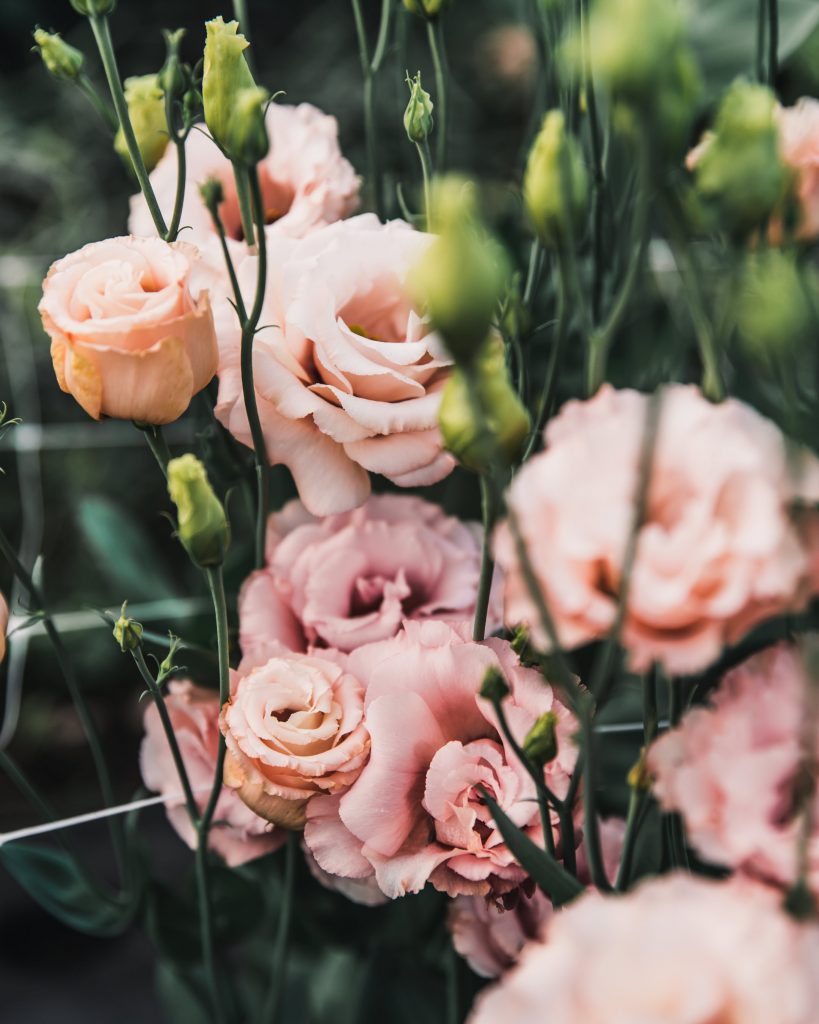
Short Stems: A Story
My first year flower farming, we just moved to the farm and were growing on unfamiliar ground. The fields were previously farmed conventionally, and I had my suspicions that they were quite tired. Even so, I did not hesitate telling everyone and their brother that we were starting a flower farm. I figured: how bad could the soil really be?
To my horror, a soil test revealed that the field had been over fertilized and was severely lacking organic matter. How much organic matter did it have? Before I share this shocking number, soil organic matter levels have fallen from 5-6 percent to less than 3 percent on most cropland soils. A typical lawn is 2–4 percent organic matter.
Our organic matter?
0.06%. Yikes. I’ll never forget this number.
To make matters worse, the over-fertilization could not be overstated. The test literally said that our phosphorus levels were off the charts. You might be thinking: plants need phosphorous. Yes, yes they do, but an imbalance of this nature ties up other nutrients.
Anyway, to my embarrassment, almost every crop was severely stunted our first year. This is why you don’t tell all the things to all the people and their brothers.
However, there was one exception. One beaming light of hope. That exception? Lisianthus.
Was this because I was an exceptionally good grower? Nope, I just got lucky. Honestly, I was probably a bit delusional growing lisianthus our first year flower farmering to begin with. But good thing I was, because it was the backbone of our production that year.
It still is. While we’ve considerably improved our soil (you can see how here), the only reason our lisianthus were so successful our first year was an accident. One environmental factor made all the difference.

Lisianthus General Information
When growing any particular plant, it’s important to understand its natural habitat. You want to see how you can recreate this environment in your unique growing situation.
Lisianthus are a native North American species found in a variety of locations. They naturally occur in dry sandy locations, but also along stream beds. Due to its broad geographical range, this tells us that lisianthus is widely adaptable to different conditions. However, there appears to be one factor that plays a major role in its success.
Short Lisianthus Stems
OK, so what’s the one environmental factor that plays a huge role in stem elongation and length? More than photoperiod and light intensity?
Lisianthus Stem Length: Temperature
The answer is temperature, and it’s crucial. It’s especially critical at seedling stage. High temperatures at seedling stage will significantly impact growth.
Lisianthus are extremely slow to grow. It takes 12 weeks just to get them to a transplantable stage (a couple sets of leaf pairs, tiny!). Stem elongation and flowering phase lasts another 3 months.
Because of this, you may not realize that your short lisianthus stems in July are a result of environmental factors from back in April. Namely, exposing seedlings to high temperatures (even for as little as 3 days![]() ).
).
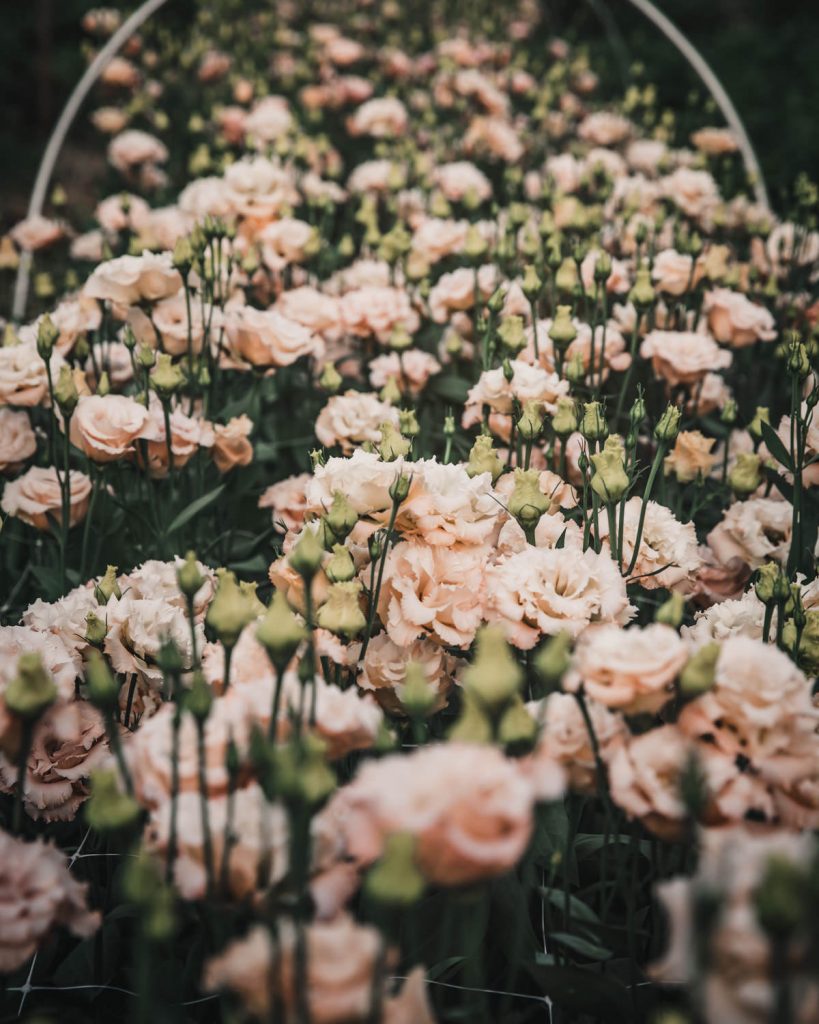
Short Lisianthus Stems: The Science
Avoid temperatures above 72°F (22°C) at seedling stage. According to Specialty Cut Flowers, a study found that exposing germinating seedlings to high temperatures for as little as 3 days has been shown to reduce stem elongation. Exposing seedlings for more than 14 days of high temperatures completely inhibited elongation, even when plants were subsequently grown at lower temperatures.
High temperatures at seedling stage can also cause rosetting. Rosetting is when a plant fails to flower and instead produces a basal cluster of leaves. Improper light and water can also cause this, but usually temperature is the culprit.
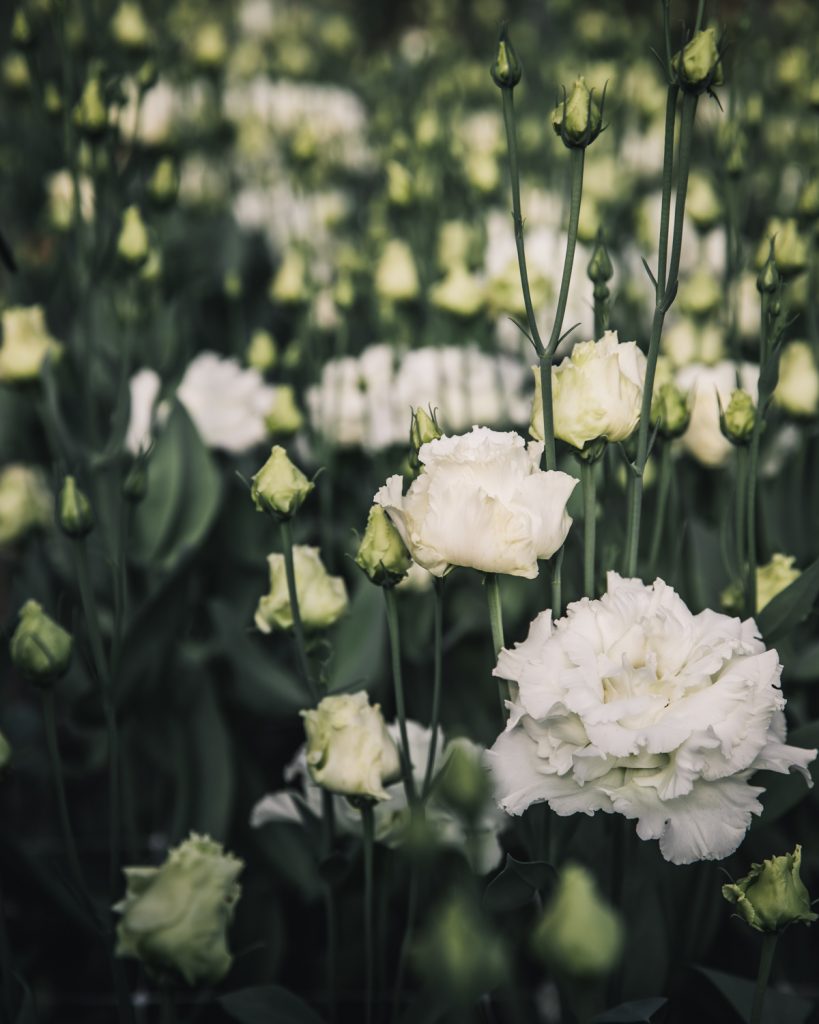
Recommendations
After seedling emergence, Johnny’s recommends maintaining temperatures of 60–70°F (16–21°C), while Specialty Cut Flowers recommends 45–65°F (7–18°C). Avoid stressing plants with high temperatures and overwatering during this stage to prevent rosetting (Johnny’s) and stunted stem elongation (Specialty Cut Flowers).
Once transplanted, Specialty Cut Flowers recommends nighttime temperatures of 65–70°F (18–21°C). Once the fourth or fifth leaf pair is formed, temperatures above 80°F (27°C) can be tolerated without negatively affecting flower quality.
On the opposite end of the spectrum, research has shown that cooling seedlings for 5 weeks at 54°F (12°C) prior to planting accelerated flowering by 10 days (Specialty Cut Flowers).
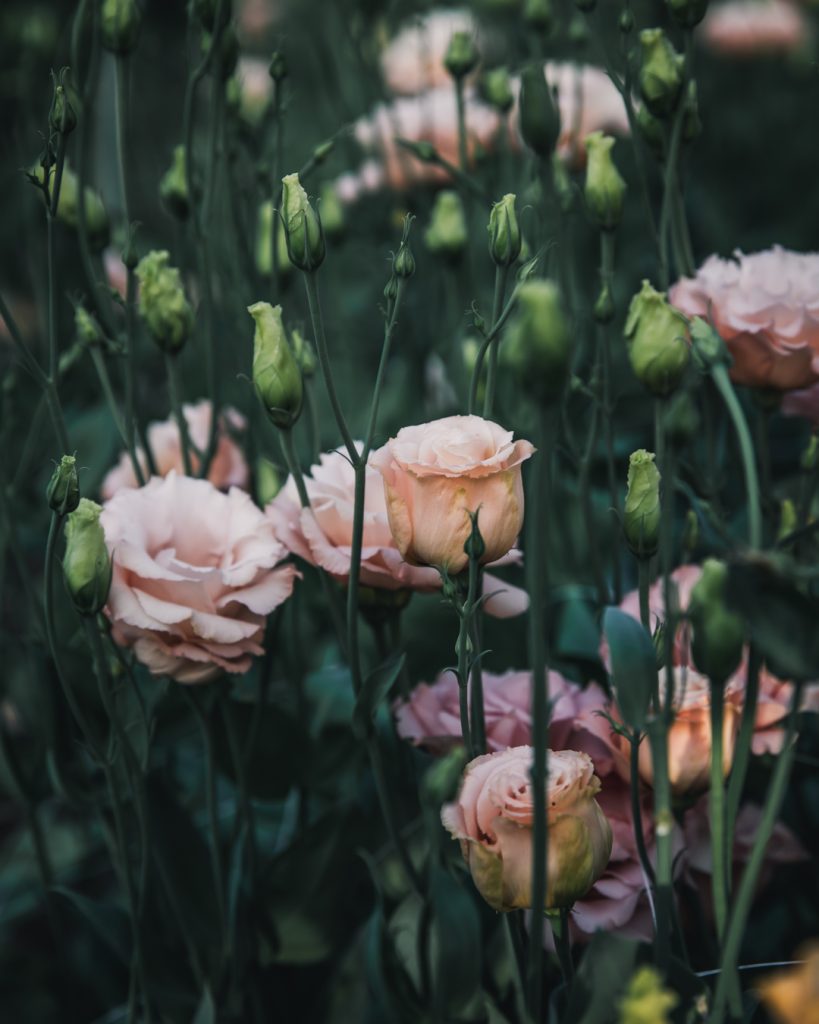
Key Takeaways
Could temperature be the culprit of your short lisianthus stems?
For me, the key takeaway here is to keep seedlings below 70°F (21°C). They might be OK a little bit above this, perhaps for a day or two, but it should be avoided. Similarly, we want to transplant lisianthus in spring, when the weather is still cool. In fact, lisianthus seedlings can tolerate cold (as low as 20s F, so long as they are in the ground).
If you’re growing from seed, keep seedlings below 70. If you order plugs and are not able to transplant them right away, keep them below 70. For me, this is our garage, where I just happened to keep them our first year (we have a seedling station here that usually hovers around 50–60°F in early spring). Sometimes, it gets quite cool, but it always stays above freezing.
And remember, temperatures in the 50s may even have a positive benefit!
Once summer hits, our average max temps are in the 80s F, and it’s not unusual for us to have extremely hot swings in the 90s. However, the lisianthus seedlings have their fourth leaf set by this time. And because our lisianthus get a cool start, we haven’t experienced any issues with this. When it comes time to flowering in the summer, lisianthus like it dry and hot for best quality of blooms (this makes sense when we remember that lisianthus are a native North American prairie wildflower).
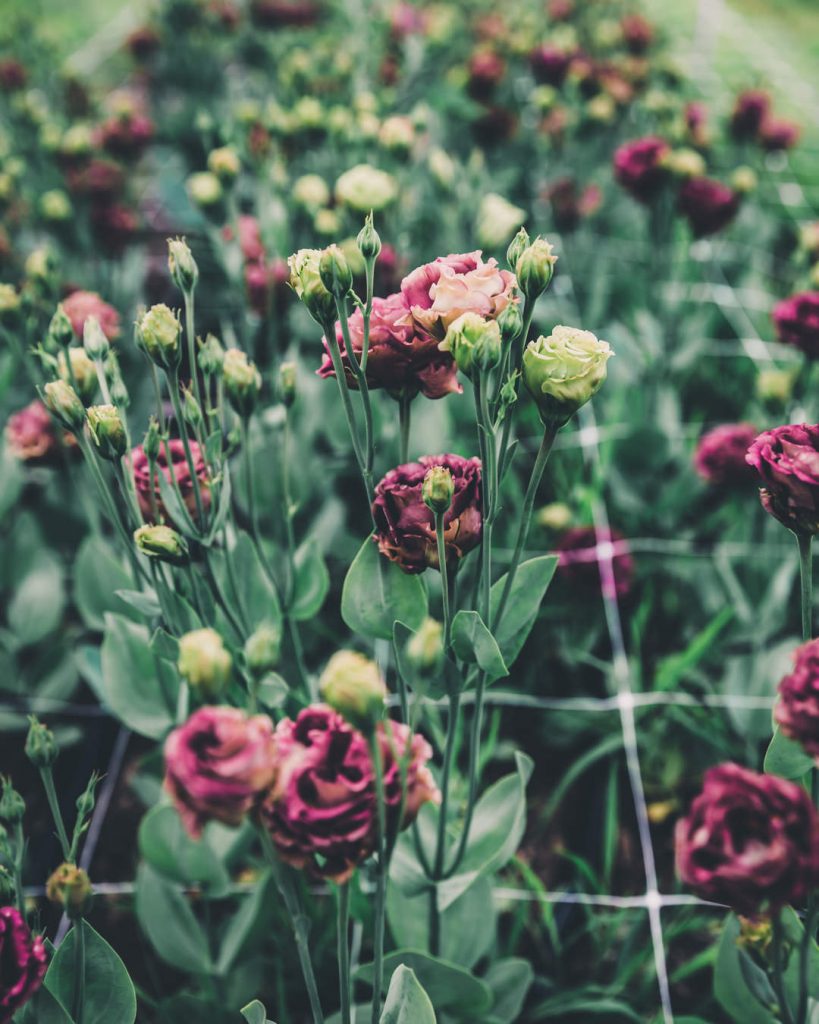
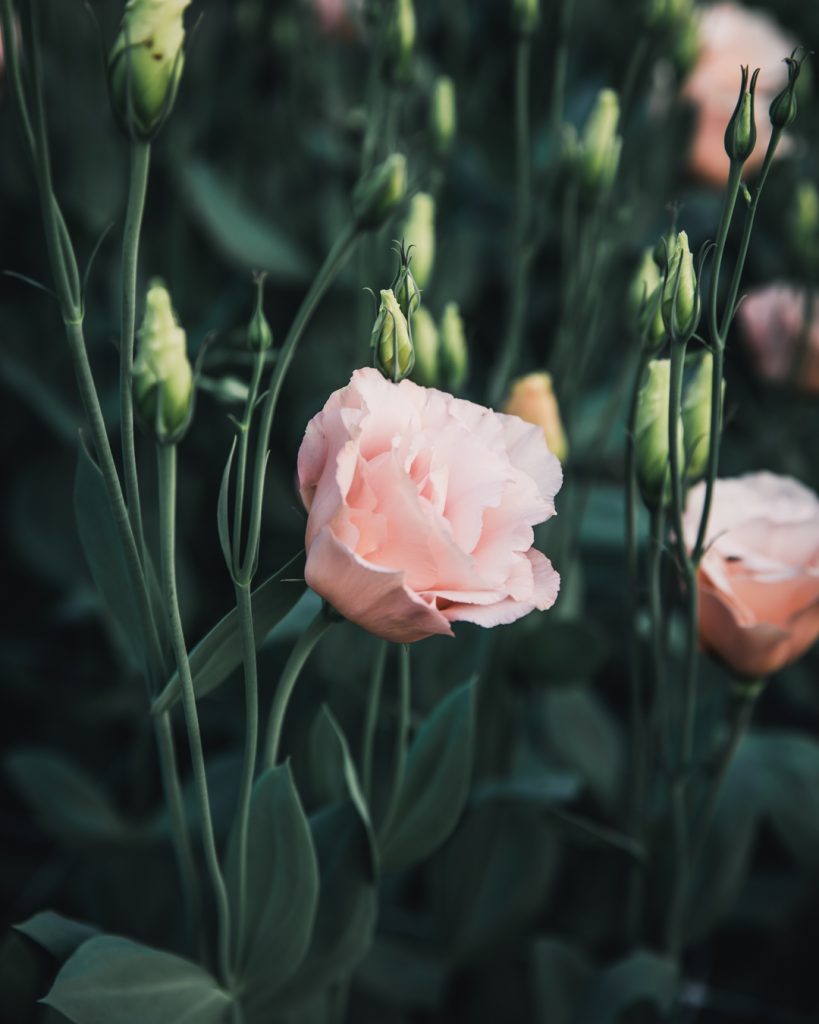
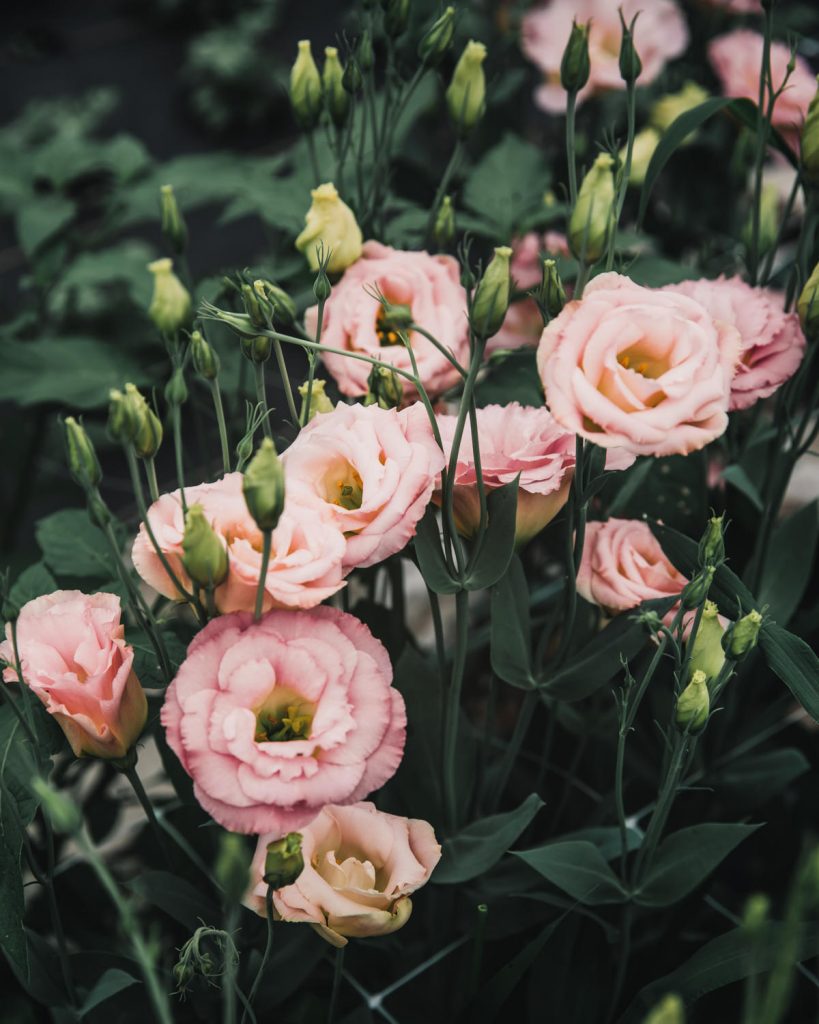
Further Lisianthus Resources
If you want to see *exactly* how I grow lisianthus (and other flowers) on the farm, please be sure to check out Flower Farmer’s Year. Not only do I collect research and tips from leading experts, I also share what I do! I include things like the exact varieties I grow, which are tall, which are short, where I source, exactly how/when I plant and harvest, optimum spacing, nutrition, and so much more. But hurry, Lisianthus Plant Profile will only be available until the end of February. It won’t be available again until next year!
Want more lisianthus tips? Check out this free guide: Top 7 Tips for Growing Lush Lisianthus
Save for later:
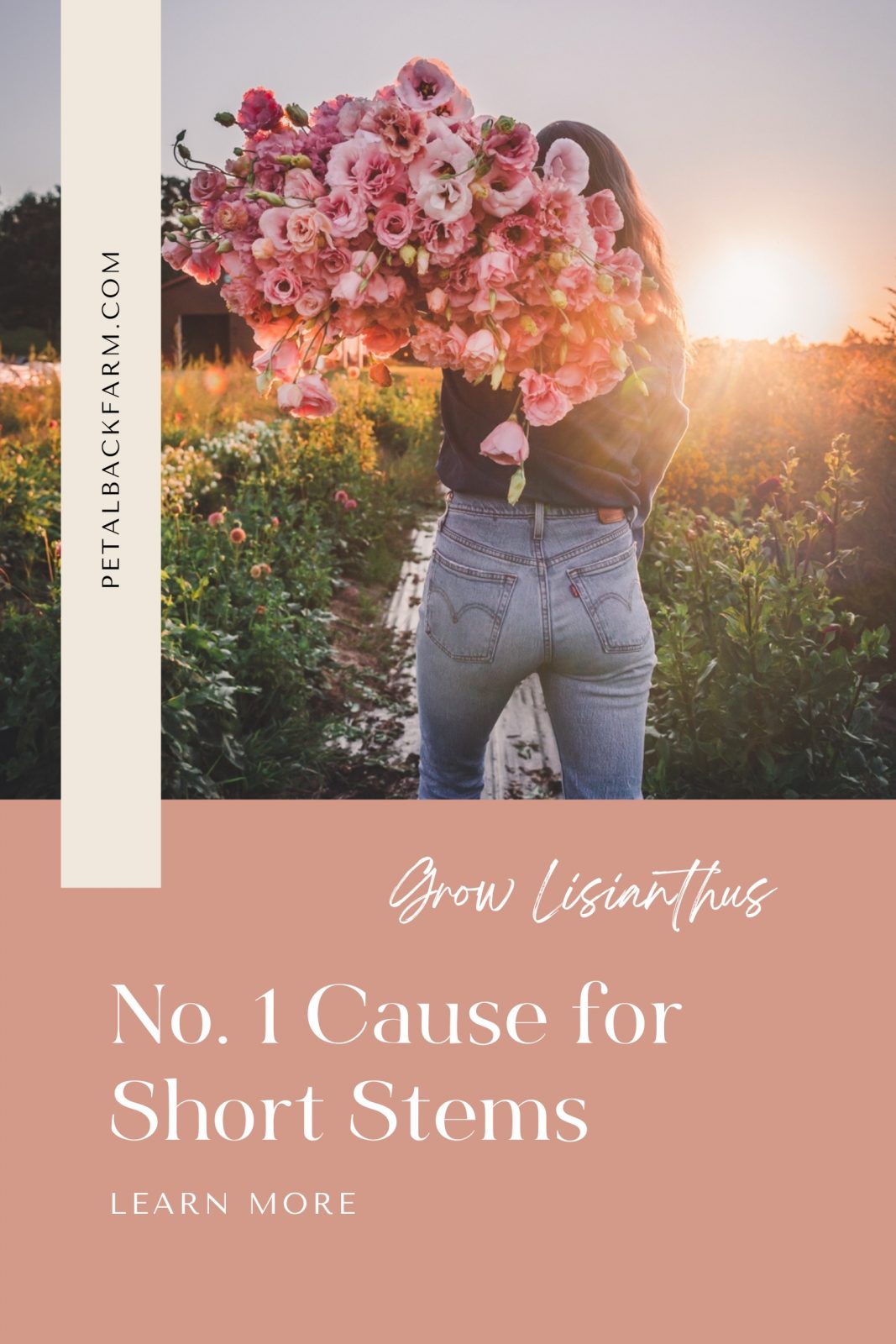
Sources
- Specialty Cut Flowers, 2nd Edition, Revised & Enlarged (SCF): Industry standard for both new and experienced growers on the production of annuals, perennials, bulbs, and woody plants for fresh and dried cut flowers (Allan M. Amritage and Judy M. Laushman)
- Johnny’s Selected Seeds (Johnny’s): Johnny’s has been in the business for 50 years, with a research farm dedicated to finding the best seeds and tools for farmers and gardeners
- Farmer Bailey’s website: Bailey Hale is a past Regional Director of the ASCFG, seed-crop producer, plug broker, and a leading farmer-florist expert)
cLICK FOR Comments +